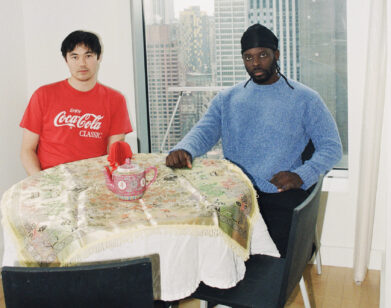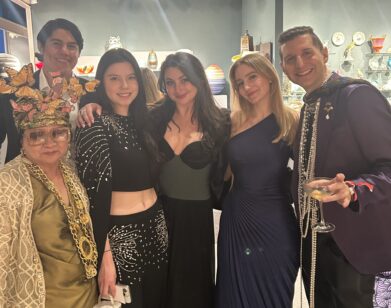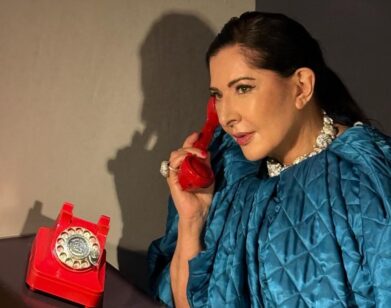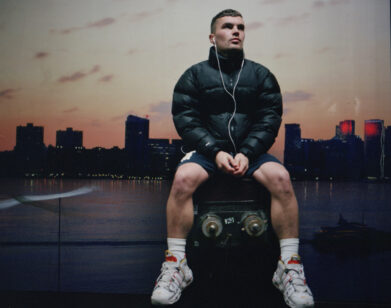OPENING
At His Namesake Gallery, Rajiv Menon Wants to Put South Asian Artists on the Map
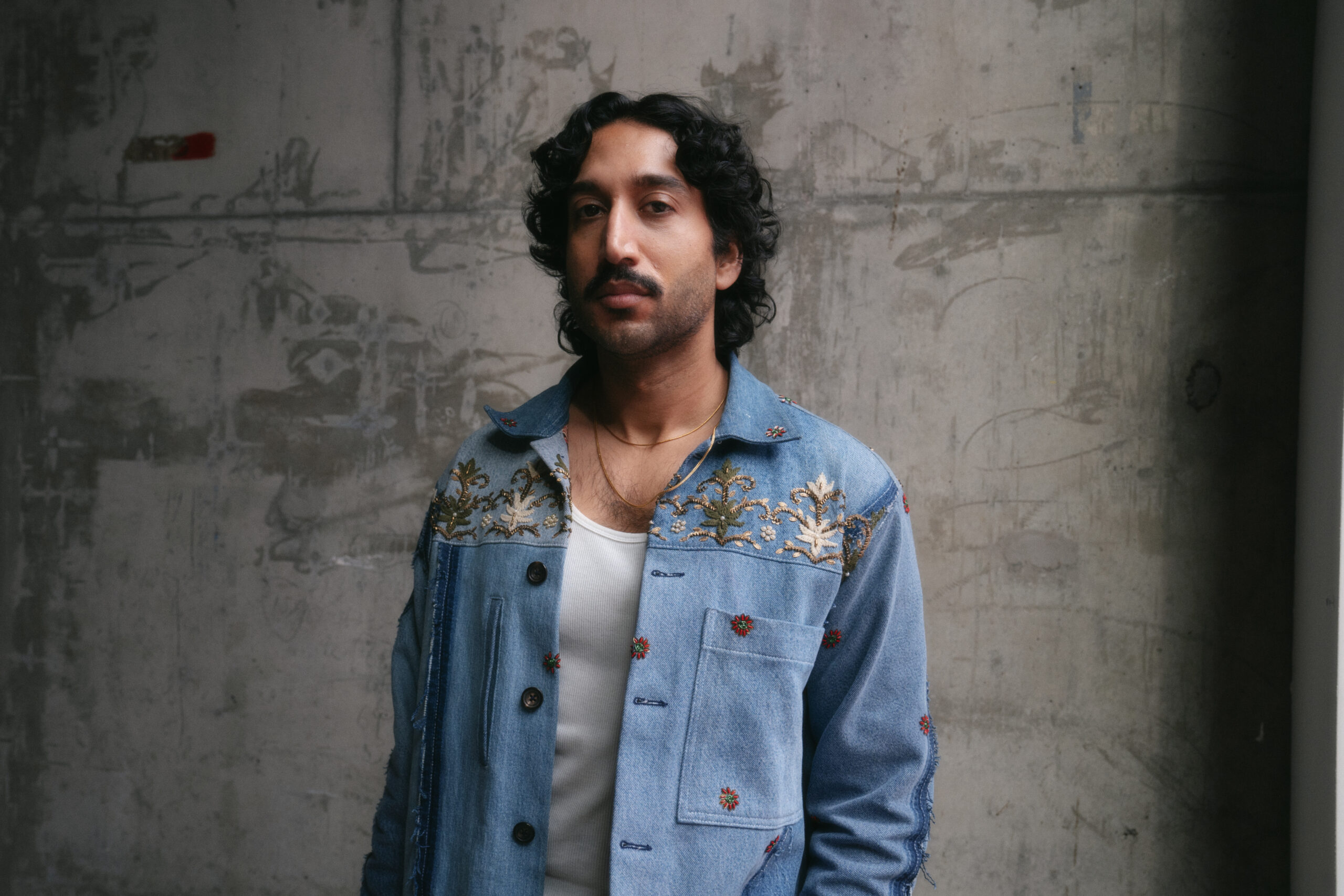
Rajiv Menon, photographed by Simrah Farrukh.
This weekend, Rajiv Menon will open his eponymous gallery in L.A., making it one of the first outposts on the West Coast to focus specifically on South Asian and diasporic art. The inaugural show, aptly named EXHIBITIONISM, features work from 19 South Asian Artists from around the world, including Raghav Babbar, Shyama Golden, and Anoushka Mirchandani, who Menon joined on a phone call last week to talk about his vision for the space. “I don’t want art to be presented as this cloistered, contained thing that’s just for a select audience and collectors,” he said. “I love the idea that someone who might not be South Asian might come in and see a thread with their own practice, and that could influence their own creative output.” In conversation, the gallerist and artist got to talking about how literature has impacted their practice, resisting the radioactivity of Instagram, and chasing the California light.
———
RAJIV MENON: Are you all packed?
ANOUSHKA MIRCHANDANI: Oh my gosh, there’s so much to do. Packing for multiple seasons is brutal.
MENON: Having to plan for every possible type of weather is insane. And then packing for an art fair already feels like packing for an Indian wedding.
MIRCHANDANI: Tell me what’s in your bag.
MENON: I have outfits for all the events, but I actually leave a lot of room, because whenever I’m in Delhi I end up buying so much. There’s so much cool fashion in India right now.
MIRCHANDANI: Totally. There’s just so much cultural production coming out of India. Music, fashion, art.
MENON: Half my bag is just Kartik Research, because that’s my uniform and ethos, and everyone is always so well-dressed there. It’s a business of aesthetics, and people really take it seriously.
MIRCHANDANI: You and I will be on the road for a little bit now. We get to see each other at the India Art Fair, and then immediately after at your inaugural opening of the permanent space, which I am so excited about. How are you feeling?

Rajiv Menon and Anoushka Mirchandani, photographed by Simrah Farrukh.
MENON: It’s coming up so quickly. L.A. is going to be incredible. Especially after the fires, there’s this spirit of rebuilding and people want to come together. There isn’t a gallery on the west coast that’s looking at South Asian art in this particular way, and I want to be able to create a hub for conversation. It’s going to put work coming out of the subcontinent and the diaspora on the map. For me, it’s most important to show the wider audience — even though our work is very in touch with the cultural context of South Asia, it’s for everybody.
MIRCHANDANI: Absolutely. This is such a huge cultural moment that you’re opening this permanent space, creating a platform to share our voices and our stories. Sometimes I’ll have people come into the studio and look at my work and they’re like, “I can’t tell that you’re Indian.” I’m like, “What is Indian art supposed to look like?” In a country of over a billion people and thousands of languages, it’s so diverse. In my work, I think about identity as being this mutable, fluid, living, breathing part of us as opposed to a very regimented perspective of what South Asian identity is supposed to be. Being able to share the breadth of those stories and those histories is going to be huge.
MENON: I hope so. I think the positioning in L.A. is really important, because I not only want people to see what incredible visual art is coming out of South Asia and the diaspora, but I want that to be in conversation. I don’t want art to be presented as this cloistered, contained thing that’s just for a select audience and select collectors. I want it to be inspiring creatives across the board. I love the idea that someone who might not be South Asian might come in and see a thread with their own practice, and that could influence their own creative output.
MIRCHANDANI: You are so good at bringing other creatives into the mix, whether they’re in music, film, literature. When you had Sid Sriram in for some of the shows, that was such a beautiful way to bring the conversation across mediums.
MENON: And hopefully more to come. Poetry specifically is such a big part of your work. How does poetry play into your practice?
MIRCHANDANI: Poetry is so transportive for me. It takes you immediately out of your moment and body, into another space and dimension of sensation, feeling, emotion, and smell. I’m captivated by Ada Limón. She’s a phenomenal poet. There’s one poem in particular called How to Triumph like a Girl, and it makes me want to stand on the rooftops and roar and cry at the same time.
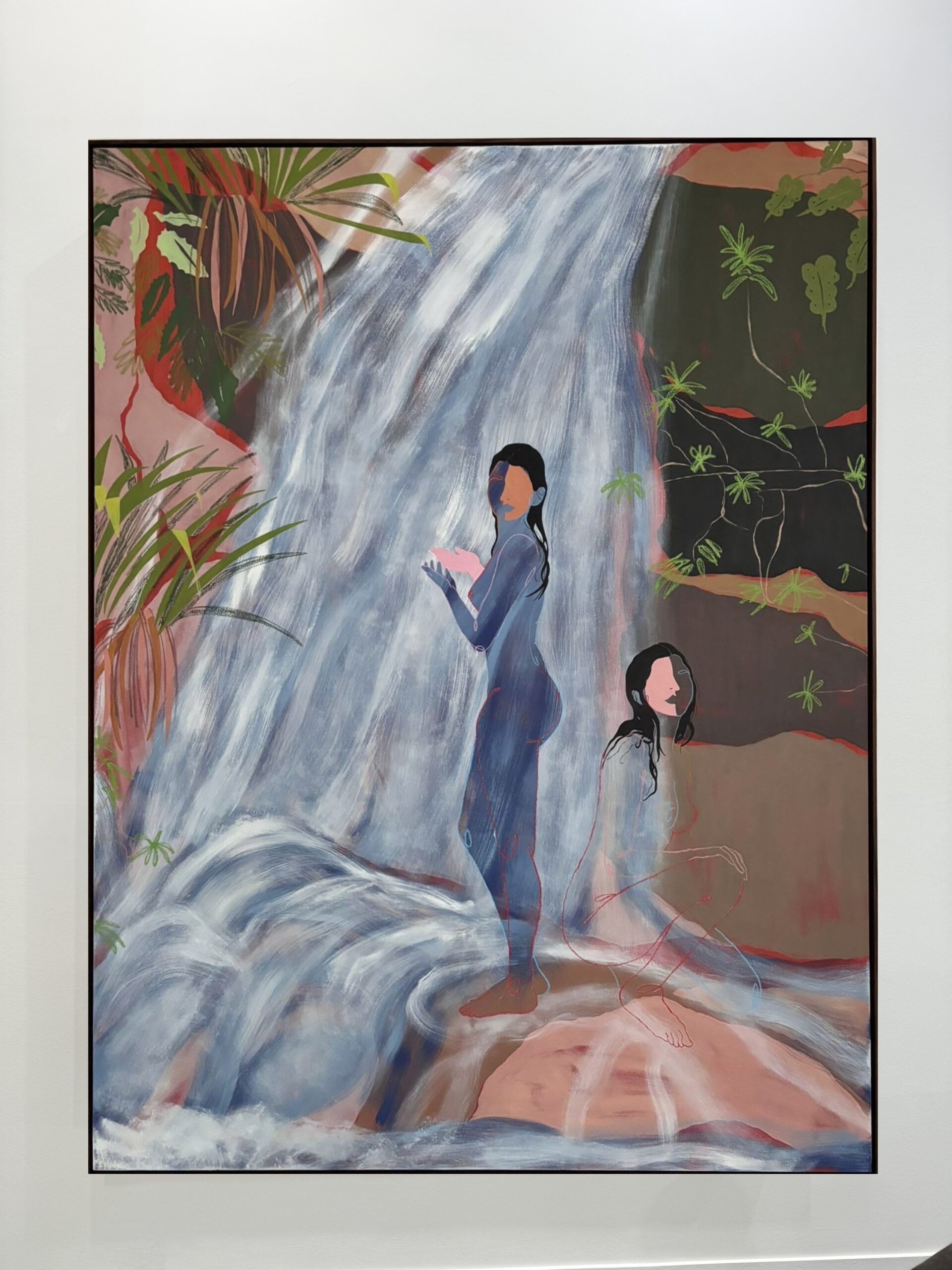
Anoushka Mirchandani, Untitled. Courtesy the artist.
MENON: When I see your work, which is so much about that feeling of displacement and migration, I think about writers that have been really engaged with similar themes. I think about Rachel Cusk and Elena Ferrante and Jhumpa Lahiri, and how on this sentence level they’re able to capture that sense of alienation, but also of self, joy, pleasure, and womanhood. It’s never just about being marginalized or other forms of grievance. There’s this full sense of humanity that comes across through composition.
MIRCHANDANI: You’re so apt in saying that with Jhumpa Lahiri. I remember reading The Namesake and this well of emotions bursting open, and having to actually put down the book at times to find a way to contain my emotions. In her most recent short stories where she wrote in Italian, her third language, she finds a sense of freedom and resistance against what people expect from her. It’s a really beautiful way to navigate what a diaspora is supposed to look and feel like. There’s no formula for it.
MENON: I feel the same way. My life would look really different if I hadn’t read The Namesake at the age that I did. With the new work and translation, it took me a second to fully understand the project. But you really see how much that has been part of her journey the whole time, and I’ve been thinking about my own work. We’re constantly translating—not literally translating texts from one to another—but we’re constantly translating ourselves. We’re translating the culture we come from into new contexts, the feelings into new ways of communication. So much of life is translation, and that’s something that’s intuitive when you grow up as the child of immigrants, or someone who’s had to move around a lot.
MIRCHANDANI: We’ve been translating since we were kids. You and I have had kind of reverse journeys. I grew up in Pune, in India, and then moved to the States at 18. You grew up in the States, and have been going back and forth to India. My entry was so focused on assimilation, trying to fit into American society and be palatable to this new foreign context that I found myself in. I was doing everything I believed to be American, like joining a sorority. How was it for you?
MENON: I grew up spending a lot of time in India, and I always had a sense of comfort there, because it was just such a normal part of my childhood. But when I started going to India regularly in my 20s, I was suddenly surrounded by other people my age who were considering the same kind of creative and cultural questions I had, but I didn’t have to center that sense of being an outsider, like I often do in the US. I felt like I had found my place, especially in Bombay. I found myself almost shedding so many of the anxieties and discomforts I grew up with as a second-generation immigrant in the US. I kept joking that I was consciously unassimilating.

Bhasha Chakrabarti, Tippoo Sultan’s Incredible White-Man-Eating Tiger Toy-Machine!!!. Courtesy the artist.
MIRCHANDANI: I think I came to somewhat that same conclusion, even though we had the opposite journey. I remember doing Art Mumbai two years ago. It was my first fair in India that I was physically present at, and it was the first time that I just felt like another artist. In the States when I was doing, for example, the Armory, I felt like an Indian artist.
MENON: Totally. When you grow up in America as a child of immigrants, you’re surrounded by so much anxiety about being perceived as a foreigner. That shapes so many of the ways you navigate the world. I felt an absolute freedom from that. I came back to the US so much more confident in my sense of self, the type of cultural position I wanted to assert and bring to the world, and the spaces I wanted to create. Increasingly, through my travels and living in India, I felt less of an impulse to think of belonging as a geographical feeling or something that was really rooted in a sense of place, and more as something that I could carry within myself.
MIRCHANDANI: I’m actually reading the book by Sarah Mathews called All This Could Be Different. She beautifully articulates these feelings of longing, the journey of assimilation, and what it looks like as a young adult and immigrant to navigate life in America. It’s really beautiful.
MENON: Sarah is a good friend. She is brilliant. She makes me so excited about the future of fiction. So, while you’re in the midst of all of this, you’re also in the middle of a move. How does it feel to be back in San Francisco after living in New York?

Joya Mukerjee Logue, A Winter Night Gathering. Courtesy of the artist.
MIRCHANDANI: Living in New York was intense, amazing, and electric. It affected my practice in ways that I didn’t expect at all. I was living out of a suitcase moving between different sublets, and the only real permanent space that I felt I had was the painting. I was getting caught up in all these architectural details of domestic space within the painting itself. All these childhood memories started coming back to me. I realized then that I have a very insecure, anxious attachment to domestic space, and a lot of it trickles down from my family lineage. But San Francisco has been my home for 14 years, so it felt like a homecoming. I had a solo booth with Jonathan Carver Moore at FOG Art Fair this year, and it was my first time exhibiting there after many years. It felt like a return to home, but also because the works for FOG were so environmentally focused, it also felt like a return to nature, which has been what I miss the most living in San Francisco. In New York, I looked out the window in my studio and it was all vertical lines. In San Francisco, I can be on a different street and look beyond the Bay, beyond Alcatraz, beyond the Marin Headlands. Your field of vision is just so different, and I didn’t realize how much that impacted me.
MENON: I’m finally developing my own relationship to L.A. It was a harsh landing, and when I first got here, I felt adrift and confused. I had lived in New York for so long and all of a sudden I was working in entertainment, talking shop all the time. It was difficult to feel home in L.A. at first, but starting the gallery has made me feel rooted in a way that I haven’t in a really long time.
MIRCHANDANI: What is it about L.A. that really captures your heart?

Mustafa Mohsin, House party. Courtesy of the artist.
MENON: It is the center of global imagination. Hollywood, with all its flaws, still has this romantic place in my mind. The thing I struggled with the most was influencer culture in L.A. Especially coming here with this goal of wanting to create waves for South Asian culture and to bring us into conversation with the mainstream, I was disturbed by the way that Instagram and TikTok had become this cultural center of gravity for the ways that South Asian people were presenting themselves. I found that it was a lot of repetition and familiarity, and it all of a sudden made relatability and recognition the primary mediums through which something could be seen as good or bad. I worry for any minority community that’s trying to get visibility, that focusing on social media becomes this deal with the devil. Yes, you get to present yourself to a larger audience, but these are marketing platforms. It ultimately subsumes our sense of culture into consumerism. I don’t think that we should stay away from social media. It’s part of our life, but a healthy culture requires it to exist in relation to other mediums. I want to make sure that our community is thinking about things a little bit more critically, and I want the gallery to fill that role within the culture.
MIRCHANDANI: That’s really astute, because social media for me from the artist’s perspective felt like a toxic relationship. There are days where I’m being love-bombed, and then there are days where I’m being bread-crumbed. It really can eat away at or inflate your sense of self. But for me, and I think for you too, it feels like LinkedIn-ish now, where I have removed a lot of my personal content off Instagram. I still share little things here and there, but the act of creating a painting is so vulnerable in of itself that I don’t feel like it’s my duty or responsibility to have to even share more with the world.
MENON: It’s something I think about a lot. A lot of artists share a lot of their practice on Instagram, but I can tell very quickly if they’re in it for the art or for the clout. I find that a lot of artists will dilute their work to get likes. Whatever work I’m doing, the priority is the art. It doesn’t matter to me if an artist isn’t even on Instagram, if they have zero followers. If the art speaks and the art is of quality, then I want to be the platform for that. I want to build that mentality, especially for audiences who are newer to art, that just because something has a lot of likes and follows doesn’t make it aesthetically successful. I think about the gallery, yes, as a commercial space, but also as an educational platform to help people understand how to appreciate art. There is a real opportunity to build connoisseurship.
MIRCHANDANI: Exactly.
MENON: Also, travel is such a big part of your life. How has that influenced your practice?
MIRCHANDANI: Actually, it’s been the light which has made a big difference in the places that I’m going to. The light in my studio in New York was different from the light in the Bay Area. The light in Pune was very different from any of these places. In New York, it took me a few weeks to even figure out how to start mixing colors, whereas the light in San Francisco has this golden misty hue as it kind of tumbles through the fog. Something that I’m excited about for my travels is chasing the light and historically looking at different parts of the world that have been touted by painters for having really beautiful light. I have many different places on my list, like Vienna, Marrakesh, and Venice. Also, trying to find a way to slow down during travel. I’m so caught up with just getting there, but I want to inculcate some slow travel in this practice, and use that time to sketch and draw.
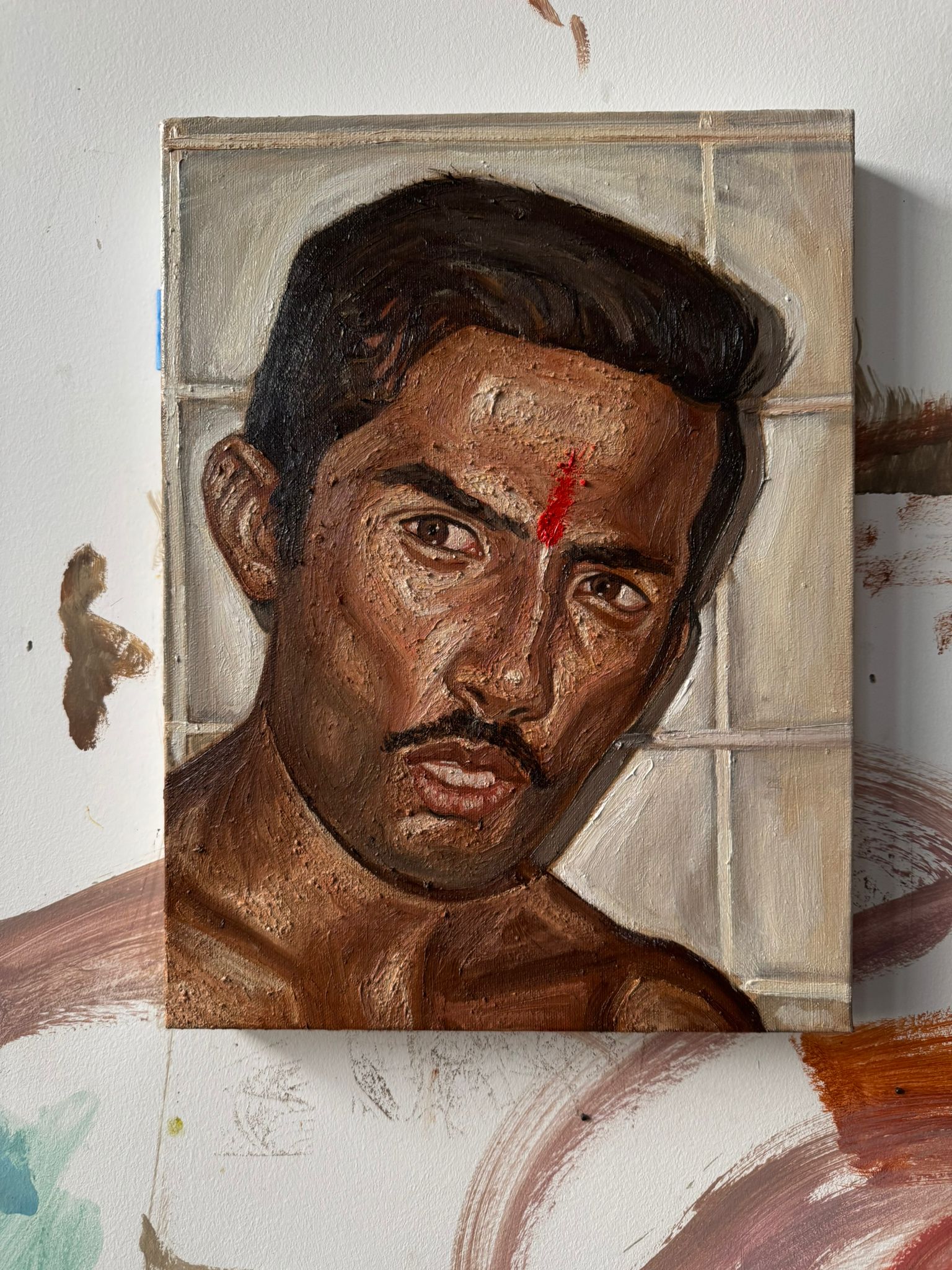
Raghav Babbar, Self portrait with moustache. Courtesy of the artist.
MENON: I have started embracing the travel experience as a destination itself. That is such a metaphor for our lives, where we’re constantly in transit culturally, personally, physically that now I feel this intense sense of peace on a plane or a train. No matter what city I’m in, being able to find solace and stillness in those moments has been such an incredible gift, because it makes all the travel manageable. Both of us are always on the go and looking for some sense of discovery wherever we find ourselves.
MIRCHANDANI: Yeah, that’s the nature of being a third culture kid.
MENON: Totally. You’re always in between. You’re not from here or from there. You’re from elsewhere.
MIRCHANDANI: Final question: I want to know the painting that you want to fall asleep to, but also wake up to.
MENON: I currently have a painting by Noorain Inam in my bedroom. It is the most graceful, beautiful, dreamy thing I’ve seen in a while. Her paintings are little lullabies and I wanted it to go in that exact space. And I would just love to live with a Lucian Freud painting. I think there’s no greater dream I have than that.

